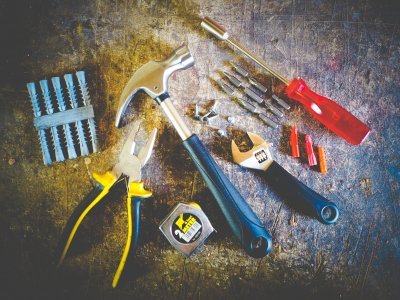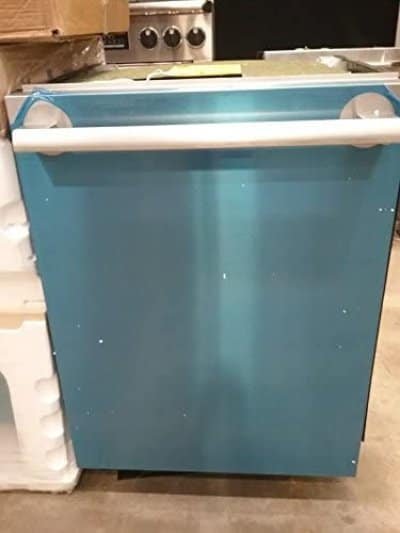If you’re looking to install a new dishwasher in your kitchen or replace an existing one, knowing how to properly plumb it is essential. Plumbing a dishwasher may seem like a complex task, but with the right knowledge and tools, you can do it yourself. In this article, we will provide you with a step-by-step guide on how to plumb a dishwasher, ensuring a successful installation.
Plumbing a dishwasher is a straightforward process that involves connecting the drain line and water supply line to ensure proper functioning. By following the steps outlined in this guide, you’ll be able to install or replace a dishwasher without any hassle.
Table of Contents
Gather the Necessary Tools and Materials
Before starting the installation process, gather the following tools and materials:

- Adjustable wrench
- Screwdriver
- Pipe wrench
- Dishwasher installation kit
- Drain hose
- Water supply line
- Teflon tape
- Bucket
- Towels
Having these items readily available will make the installation process much smoother.
Prepare the Space for the Dishwasher
To begin, ensure that the space beneath your countertop is suitable for the dishwasher. Measure the dimensions of the opening and make any necessary adjustments to accommodate the new appliance. Clear any debris or obstructions from the area to provide a clean working environment.
Install the Drain Line
The drain line is responsible for removing wastewater from the dishwasher. Locate the dishwasher’s drain outlet, usually found at the back of the appliance. Connect the drain hose to the outlet, ensuring a secure fit. If required, use a hose clamp to fasten the connection. Next, connect the other end of the drain hose to the drainpipe under your sink. Make sure the connection is tight and secure.
Connect the Water Supply Line
The water supply line provides fresh water for the dishwasher. Locate the hot water supply valve under your sink and shut it off. Attach one end of the water supply line to the valve, using Teflon tape to create a watertight seal. Connect the other end of the supply line to the inlet valve on the dishwasher. Tighten both connections using an adjustable wrench, ensuring they are leak-free.
Secure the Dishwasher in Place
Once the plumbing connections are complete, secure the dishwasher in its designated spot. Align the appliance with the opening and adjust the leveling feet to ensure stability. Use screws or brackets provided in the dishwasher installation kit to secure the appliance to the underside of the countertop. This step will prevent the dishwasher from tipping or moving during operation.

Test the Dishwasher
Before using the dishwasher, it’s important to test its functionality. Turn on the hot water supply valve and check for any leaks in the plumbing connections. Once you’ve confirmed that there are no leaks, plug in the dishwasher and run a test cycle. Monitor the dishwasher during the cycle to ensure proper water drainage and no unusual noises.
Troubleshooting Common Issues
If you encounter any problems during the installation or while using the dishwasher, here are a few common issues and their solutions:
- Leaks: Check all plumbing connections and ensure they are tightly secured. Replace any faulty or damaged components.
- Poor Drainage: Clean the dishwasher filter and ensure the drain hose is not kinked or clogged. Check the drainpipe for any obstructions.
- Noisy Operation: Make sure the dishwasher is level and properly secured. Adjust the leveling feet if necessary.
Can I install a dishwasher without professional help?
Yes, plumbing a dishwasher can be done by homeowners with basic plumbing knowledge and the right tools.
How long does it take to plumb a dishwasher?
The installation process typically takes a few hours, depending on your familiarity with the task and any unforeseen complications.
Do I need a separate electrical connection for a dishwasher?
Yes, dishwashers require a dedicated electrical circuit. Consult the manufacturer’s instructions for specific electrical requirements.
Can I connect the dishwasher drain to a garbage disposal unit?
Yes, most dishwashers can be connected to a garbage disposal unit. Follow the manufacturer’s guidelines for proper installation.
Is it necessary to use Teflon tape on plumbing connections?
Using Teflon tape helps create a watertight seal and prevents leaks. It is recommended for all threaded connections.
Conclusion
By following these step-by-step instructions, you can successfully plumb a dishwasher in your kitchen. Remember to take your time, double-check all connections, and test the appliance thoroughly before regular use. Plumbing a dishwasher may seem intimidating at first, but with the right guidance, it becomes a manageable DIY task.
Plumbing a dishwasher is a manageable DIY project that can save you money and provide the convenience of a modern kitchen appliance. By following the step-by-step instructions provided in this article, you can confidently install or replace a dishwasher in your home. Remember to take the time to gather the necessary tools and materials, and don’t hesitate to seek professional help if you encounter any difficulties. Enjoy the benefits of a well-plumbed dishwasher and the ease it brings to your daily life!

